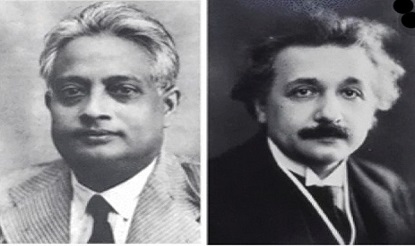
The Legacy of Satyendra Nath Bose: The Man Behind the Bosons
You may be familiar with Albert Einstein, the brilliant physicist who transformed the field with his theories of relativity and quantum mechanics. But have you heard of his Indian colleague and collaborator, Satyendra Nath Bose? Bose was a pioneering scientist who made significant contributions to physics, including the discovery of a new state of matter. He is widely regarded as one of India’s and the world’s greatest scientists.
A Mistake That Changed Physics
Bose was born in Calcutta (now Kolkata) on 1 January 1894. He studied mathematics and physics at the University of Calcutta and became a lecturer there in 1916. In 1921, he joined the Department of Physics as a Reader at the University of Dhaka, where he taught quantum mechanics, a new and exciting field of physics that deals with the behavior of atoms and subatomic particles.
One day in 1924, while teaching quantum mechanics, he thought he had made a mistake in his calculation. However, when he checked his result, he found that it matched with the experimental data. He realized that he had stumbled upon a new way of deriving Planck's radiation law, which describes how much energy is emitted by a hot object at different wavelengths of light. Planck's radiation law was originally derived by Max Planck using classical physics but Bose's derivation did not use classical physics at all.
Einstein's Endorsement and Extension
Bose did not hesitate to send his paper titled Planck's Law and the Hypothesis of Light Quanta to Albert Einstein, who was then the most famous physicist in the world. He wrote in his letter: "I have ventured to send you the accompanying article for your perusal and opinion. I am anxious to know what you think of it."
Einstein was impressed by Bose's paper and recognized its importance. He translated it into German and published it in a prestigious scientific journal called Zeitschrift für Physik. He also extended Bose's method to atoms and molecules and predicted a new state of matter called Bose-Einstein condensate, in which a large number of particles behave as one giant quantum entity. The particles that obey Bose's statistics are called bosons, after his name, by Paul Dirac, another great physicist who unified quantum mechanics and relativity.
The First Observation of Bose-Einstein Condensation
Einstein's prediction of Bose-Einstein condensation remained unverified for decades because it required extremely low temperatures and high densities. It was not until 1995 that a group of scientists at the University of Colorado at Boulder and the Massachusetts Institute of Technology achieved the first experimental observation of Bose-Einstein condensation in a dilute gas of rubidium atoms cooled to near absolute zero. They used lasers and magnetic fields to trap and cool the particles until they formed a single coherent wave. They shared the Nobel Prize in Physics in 2001 for this discovery.
Other Contributions and Honors
Bose was not only interested in quantum mechanics, but also in other topics such as the electromagnetic properties of the ionosphere, X-ray crystallography, thermoluminescence, and unified field theory. He wrote numerous scientific papers from 1918 to 1956 and contributed to various fields of physics and mathematics. He was also a strong advocate of doing science in one's mother tongue and said that those who think it is impossible to do science in Bangla do not know either Bangla or science.
Bose was awarded the Padma Vibhushan, India's second-highest civilian award, in 1954 by the Government of India. He was also elected as a Fellow of the Royal Society in 1958, which is one of the highest honors for a scientist. He was also a member of parliament in the Rajya Sabha from 1952 to 1960, where he represented the interests of science and education.
Bose died in Calcutta on 4 February 1974, at the age of 80. He is regarded as one of the greatest scientists in India and a pioneer of quantum physics. He is the pride of the University of Dhaka, which has a Bose Professor and a museum named after him. His legacy lives on in the bosons, the Bose-Einstein statistics, and the Bose-Einstein condensate, which are fundamental concepts in modern physics.